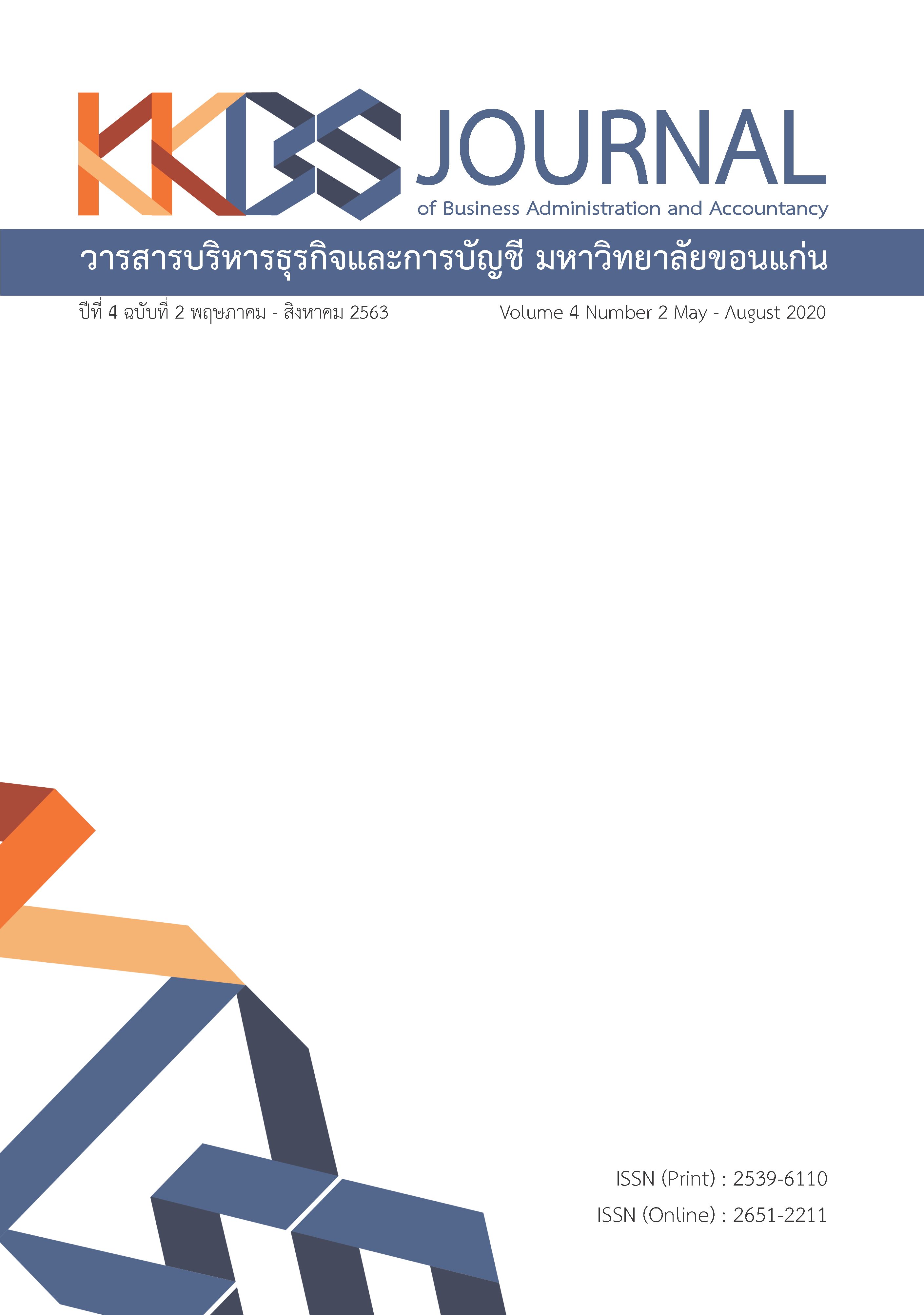Market-Share Changing and Pricing Simulations of Thai Herbal Soap Using 3D-Perceptual Map
Main Article Content
Abstract
Thai herbs, besides being used as the ingredients of medicines, the most popular product that uses herbs as ingredients is soap. However, the market shares of Thai herbal soaps are very little when compared with the total market. This research studies the guideline to improve Thai herbal soaps to increase their market shares. Researcher used the 3-D perceptual map to simulate market share and optimum price. This research aims to 1) to study guidelines to improve Thai herbal soaps to increase their market shares. 2) to study the optimum price of Thai herbal soaps. From market share and pricing simulation found that if “Bennett” (market leader of Thai herbal soap) improve pricing, scent, using experiences, and physical attributes, it can increase the market share from 11.67% to 16.27%. If the small Thai herbal soap brands improve their pricing and physical attributes, it can increase the market share from 7.00% to 14.05%. And the optimum price per each of Thai herbal soap should be 42 baht.
Article Details
The articles published in the journals are the authors' opinions, not the opinion of the editorial team or administrative staff. The articles published is copyright of the Journal of Business Administration and Accounting, Khon Kaen University.
References
Adcock, P. (2014). Supermarket shoppology. 2nd ed. Oxfordshire, England: Writersworld.
Afreen, M. (2018). Branding strategies of FMCG companies. International Journal of Research and Analytical Reviews, 5(4), 162-170.
Baack, D.W., Czarnecka, B. & Baack, D. (2019). International marketing. 2nd. ed. Chennai: Sage.
Brand Buffet. (2017). Local Brand VS. Global Brand. Retrieved December 24, 2019, from https://www.brandbuffet.in.th/2017/08/local-brand-vs-global-brand/
Chutima, W. & Napawan, K. (2017). Segmentation of natural organic soap for body wash of consumers in bangkok by using factor the consumer usage behavior of natural organic soap. Bangkok: Rangsit University. (In Thai)
Clausen, G. (2005). Price sensitivity for electronic entertainment: determinants and onsequences. Florida: Dissertation Press.
Greenacre, M.J. (2010). Biplots in practice. Bilbao: S.A. de Litografia.
Kantar Worldpanel. (2018). Big brand competition on herb market. Retrieved January 21, 2020, from https://www.prachachat.net/marketing/news-57482.
Kasikorn Research. (2019). Herb for SME. Retrieved January 21, 2020, from https://www.kasikornbank.com/th/business/sme/KSMEKnowledge/%20article/KSMEAnalysis/Pages/Herb_Market.aspx
Kotler, P. (2000). Kotler on marketing: how to create, win and dominate market. London: Free Press.
Kotler, P. & Keller, K.L. (2016). Marketing management. 15th ed. New York: Pearson.
Panyanat, P. & Wut, S. (2020). Multi-dimensional positioning of Thai’s SME products :A case study of soap products. Proceedings of The 6th Thai-Nichi Institute of Technology Academic Conference, Bangkok, Thailand, 21 May 2020. pp.186-192.
Little, T.D. (2013). Longitudinal structural equation modeling. New York: Guiford Press.
Rossiter, J.R., Percy, L. & Bergkvist, L. (2018). Marketing communications: objectives, strategy, tactics. New York: Sage.
Sangaroon, C. (2018). Development of souvenir handicrafts in Nakhon Nayok: Streak plum mango from Soap. Journal of Multidisciplinary in Social Sciences, 14(2), 185-204.
Schiffman, L.G. & Wisenblit, J.L. (2019). Consumer behavior. 12th ed. Upper Saddle River, N.J.: Pearson.
Solomon, M. (2009). Launch advertising and promotion in real time. New York: Flat World Knowledge.
Vidal et al. (2018). The effects of cold saponification on the unsaponified fatty acid composition and sensory perception of commercial natural herbal soaps. Molecules, 23(9), 2356-2376.


